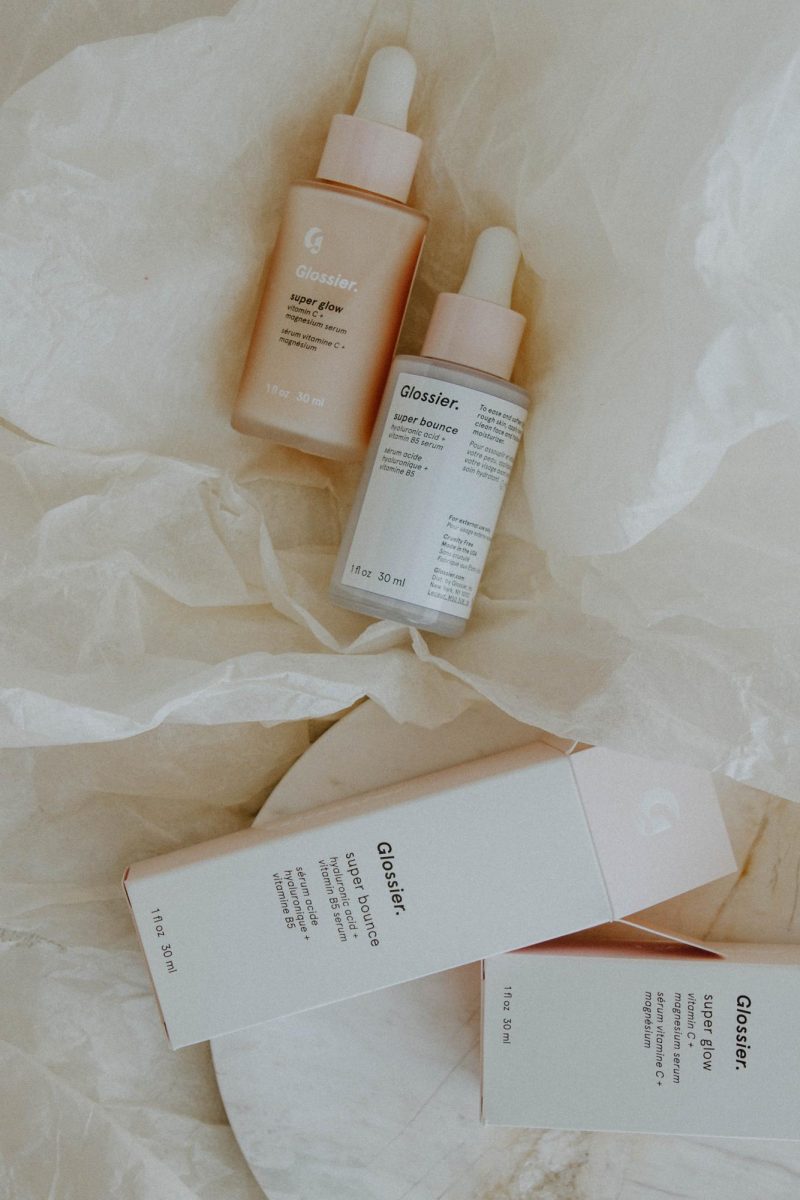If you have made your way to this page, you probably want clearer skin but are unsure of where to start. There is a lot of information to cover regarding skincare, so I’ll begin by setting up the foundational components in this step-by-step article. Luckily, I already went through the rabbit hole of skincare do’s and don’ts over the summer, so here is a beginner’s guide to skincare!
1. Determine your skin type.
There are five major skin types: dry, oily, combination, and sensitive. To determine your skin type, wash your face for about a minute with your facial cleanser and then let it air dry. If your skin feels dry, tight, or flaky, you have dry skin, like me. If you are feeling oily in your T-zone, but your skin feels dry everywhere else, your skin type is a combination. If you feel oily everywhere then, you guessed it, you have oily skin. Having a sensitive skin type just means that your skin is very sensitive to products and can redden or react easily. There is also acne-prone skin, which is like sensitive skin in the sense that it can apply to any skin type, whether it is oily, dry, or combination.
2. Determine your designated skincare routine.
The amount of steps you end up incorporating is extremely important! Here’s a blueprint for how many products you might want to incorporate, the order of application, as well as when to use them. Keep in mind that some parts of a skincare routine are daily, weekly, or completely optional.
[DAILY] MORNING: Water-based cleanser, toner*, essence*, moisturizer*, SPF (sunscreen).
[DAILY] NIGHT: Oil cleanser, water-based cleanser, toner*, essence*, serum*, moisturizer.
[WEEKLY] Exfoliator*, face masks*, etc.
*= Optional
Some of these are musts, and some of these steps are simply optional because excessive use of some of these products could clog your pores or damage your skin barrier. Really, any product could clog your pores, so that is why it is essential to know what your skin type is and buy products targeted towards your skin type; however, some routine steps are really not necessary every day for clearer skin, thus optional, such as using a serum. This is because if you apply a serum but don’t wash it off afterward, as is the case with most serums, you can unintentionally clog your pores.
Exfoliating is suggested weekly because it gets rid of dead skin cells on your skin barrier by breaking it down. However, this is very unhealthy if done regularly and can make your barrier very weak and vulnerable. There are still benefits to getting rid of dead skin cells that are just sitting on your face, so that is why it is recommended to be done weekly at the most.
Hydrating your skin is very important for building up your skin barrier, on the other hand, as it repairs it. Therefore moisturizers are essential to your routine, but some sunscreens have moisturizer in them so you can pretty much get away without putting moisturizer on in the morning if that is the case.
But, before any of these steps, you need to wash your face. There are many different facial cleansers out there, varying from creams to cleansing foams. What is important is that these cleansers are water-based. This is because water-based cleansers are an essential component of one’s skincare routine, particularly due to the importance of double cleansing. Double cleansing is only done at night on a daily basis, and the process of cleansing your face twice is to efficiently wipe away all the impurities on one’s face. Double cleansing is done by first using an oil cleanser, which you apply to your face after wetting it, and then rubbing it gently in circular motions all around your face. Then, you take your water-based cleanser–the same one you use first thing in the morning–and rub it between your hands to get a foamy texture, if it is not a cream-based cleanser. Then you apply circular motions all around your face and wash it off. While an oil cleanser is efficient in deep cleaning your pores and removing sebum, it can also block your pores as it is an oil, so taking a water-based cleanser to break down and wash off the oil cleanser from before along with the remaining impurities completely cleans your face. Then you can finish by using a toner on your face, if that is a part of your routine, and lock in moisture with a moisturizer before bed.
3. Research products that were made for or align with your skin type.
So, you have figured out your skin type and the type of routine you want to reach clearer skin. What products are you going to try? It is important to acknowledge when researching skin products that not every review you see online is going to be completely accurate because everyone has different needs according to their skin type or allergies. Also keep in mind that any product can clog your pores or lead to a breakout, even the items labeled as “non-clogging”. If you are looking for efficient skincare, I would suggest looking into Korean skincare because they are leading the industry and have beneficial ingredients spanning their products, such as rice water, etc.
4. After buying, apply the new product to your wrist to see how your skin reacts.
Okay, so you’ve just researched some products that have multiple good reviews, no cons in terms of ingredients or fragrances, and are compatible with your skin type. Time to splurge—or I mean order! But once you’ve received this product, don’t apply it to your face…Wait, what? Instead of applying it to your face, test it by applying it to a section on your wrist, and wait for 24 hours. If there is no reaction, you are good to go and apply it to your face. If you apply it to your face without testing it on your wrist, you are risking having an allergic reaction– better known as contact dermatitis—to the chemicals in that skincare product. This type of reaction can take up to two weeks to completely resolve depending on how long you were in contact with the chemical in the product… and, unfortunately, I am speaking from experience. So, don’t put it on your face immediately, however excited you may be, and first see if it passes the test. You bought the product to get better skin, not worse skin.
5. Incorporate that new product into your skincare routine and see the gradual effect!
This step is pretty self-explanatory. If that product works for you, then it is the perfect addition to your routine! As long as you follow these steps, you will be in a better place to achieve acne-free skin! Thank you for reading, and make sure to stay tuned for part two of this beginner’s guide to skincare.





